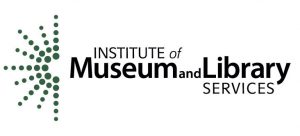Pathways’ second year will be centered around ‘idea generation and product creation’. Using the problem statement developed throughout Year One, Pathways will begin to host participatory design workshops to generate possible solutions that can be piloted in Year Three.
The Workshops
While yet to be set in stone, the planned outline for Year Two revolves around the idea of five workshops across the state, which will allow for diverse mingling. They will be highly interactive workshops, led and developed by the Investigation Team, based on the futures workshop model (Jungk & Mullert 1987). The workshops will be made up of four primary phases:
- Preparation, in which workshop participants will work together to establish culturally competent ‘ground rules’ that will exist for the entire duration of the workshop.
- Critique, in which the Pathways team will introduce the problem statements created and workshop participants can begin to discuss and ask questions about the statements in smaller groups.
- Visioning, in which the small groups of workshop participants will create ideas for solutions to the problem statements presented to them. Specifically, they will be asked to draft a scenario which envisions how they see their problem solved in 2050 and what steps were taken that led to their vision.
- Implementation, in which each smaller group will share their visions with the larger group, and other groups will be able to provide supplementing ideas that may help their vision become more concrete.
At the end of the workshops, the participants will be asked to agree upon which of the many visions proposed they feel are most desirable and actionable.
The People
In order to help the outcomes of these workshops be as actionable as possible, the participants of the five workshops will be identified based on stakeholder groups and categories that surfaced during Year One. Some potential examples include representatives from organizations like civil service agencies, the NYS Board of Education, MLIS programs, or larger library systems. These are not definitive examples, as the ultimate selections will be guided by the stories collected in Year One and what groups will be able to assist the best.
The Result
Hopefully, after these five workshops with representatives from various stakeholder groups/categories, Pathways will have a minimum of three potential solutions that can be piloted in Year Three. Criteria for selection will be based on (but not limited to) factors such as feasibility, access to resources, representation of library types, and potential for greater impact.
Relevant Works:
Jungk, R. & Mullert N. (1987). Future workshops: How to Create Desirable Futures. London, England, Institute for Social Inventions.

